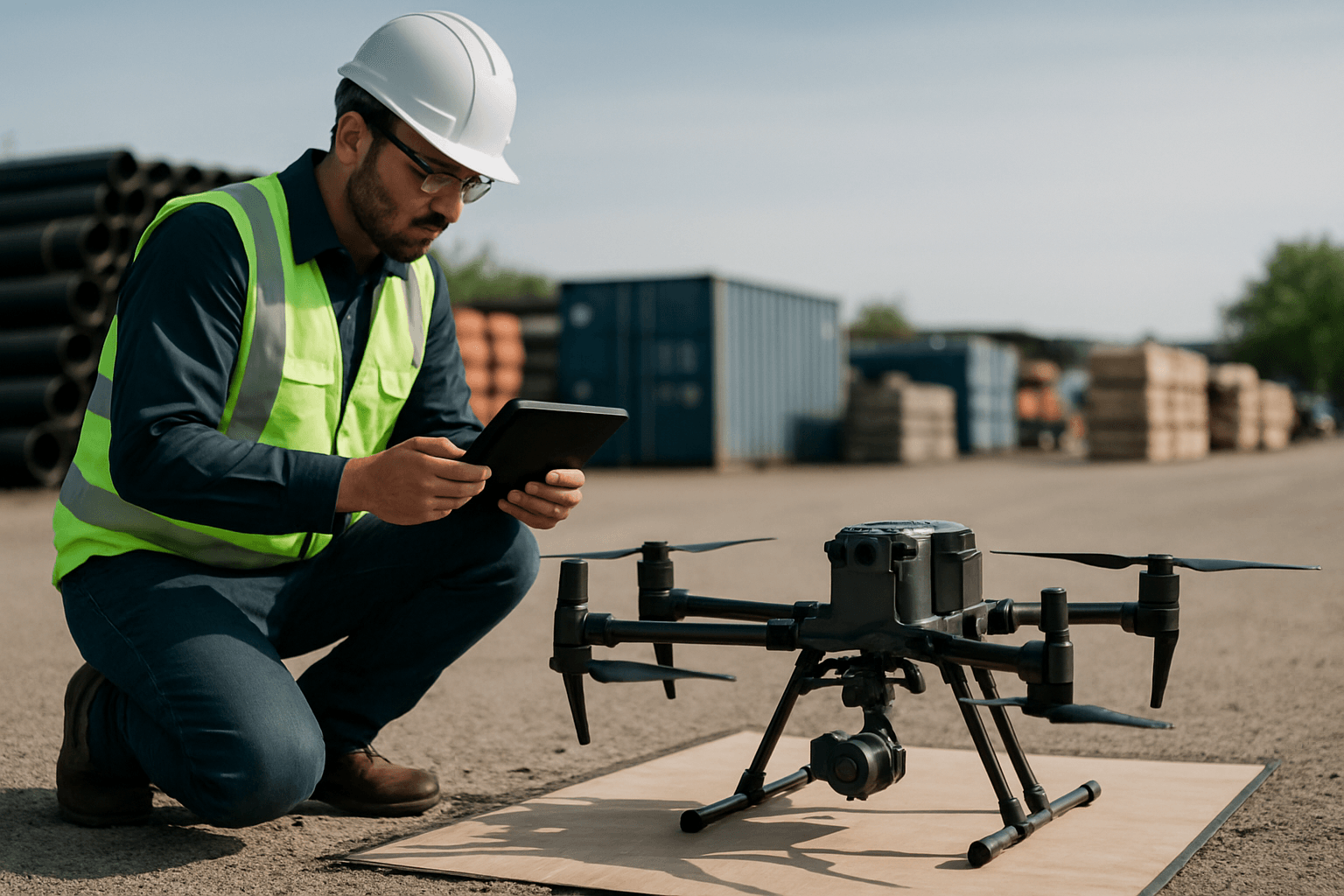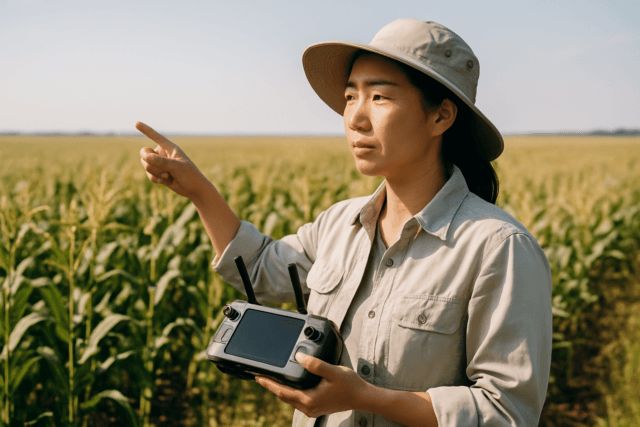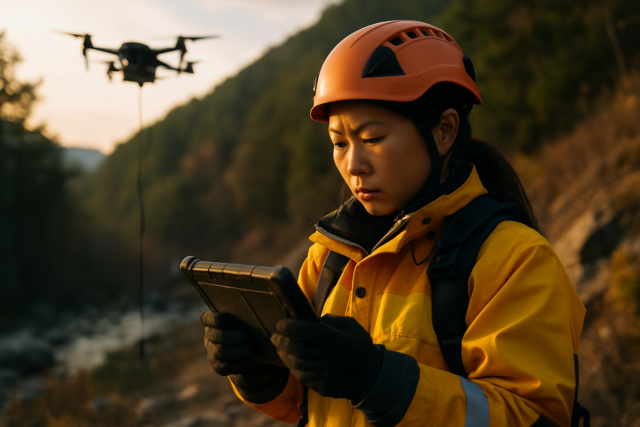Drones are rapidly transforming industries, offering unprecedented cost savings across various sectors. From agriculture and construction to public safety and logistics, the adoption of drone technology is delivering substantial returns on investment (ROI) by streamlining operations, improving data collection, and enhancing safety. This article explores the multifaceted ways in which drones are driving down costs and boosting efficiency for businesses and organizations.
The Economic Edge of Drones
Drones are proving to be a “time- and money-saving” technology in 2025, offering quantifiable savings that are driving further adoption across industries. Reports indicate that drone mapping can be hundreds of times faster than traditional ground surveys, while replacing police helicopters with drones can cut costs by approximately 55%, translating to significant annual savings.
Key Factors Influencing Drone ROI
Several factors contribute to the impressive ROI of drone technology:
- Purchase and Setup Costs: While high-end drones for industrial applications may have a higher initial cost, they often deliver significant ROI due to their advanced capabilities and efficiency.
- Labor and Time Savings: Drones replace costly and time-consuming manual tasks such as inspections, land surveys, and crop analysis, significantly reducing labor expenses and project timelines.
- Revenue Generation: Drones can directly generate income through services like aerial photography, mapping, deliveries, and inspections, creating new revenue streams for businesses.
- Operational Efficiency: Faster data collection and improved accuracy lead to better decision-making, optimizing resource allocation and minimizing errors.
- Maintenance and Downtime: Proper drone care ensures long-term ROI by preventing costly breakdowns and extending the lifespan of the equipment.
Industry-Specific Cost Savings
Construction
Drones are revolutionizing construction project management by:
- Progress Monitoring: Weekly drone flights replace manual site checks, resulting in 20-30% time savings on surveying and progress tracking tasks.
- Facade Inspections: Replacing scaffolding with drones for facade inspections can save significant costs.
- Safety and Rework Reduction: Thermal drones can identify overheating equipment or leak risks early, reducing accidents and shutdowns, and minimizing expensive rework by catching errors sooner.
Surveying and Mapping
Drones offer a faster, more accurate, and cost-effective alternative to traditional surveying methods:
- Land Development: Drone surveys can be up to 400 times faster and 40% cheaper than traditional methods.
- Site Uptime: Quicker mapping reduces site downtime by up to 40%.
- 3D Modeling: Drones can generate millimeter-accurate 3D models in hours instead of days, preventing costly rework.
Agriculture and Precision Farming
Drones are transforming agricultural practices by:
- Crop Health Monitoring: Drones equipped with multispectral cameras can survey vast areas, providing data on crop health, irrigation needs, and pest management, reducing chemical usage and increasing yields.
- Efficient Field Application: Drones can reduce field application costs by up to 90% through automation of battery and payload management.
- Targeted Resource Consumption: Revolutionizing how farmers manage their fields, improving crop health and yield while reducing resource consumption.
Public Safety
Drones are proving invaluable in public safety applications:
- Law Enforcement: Shifting police air service operations to drones can cut costs by over 55%, resulting in substantial annual savings.
- Search and Rescue: Drones can hover on station much more cheaply than rescue helicopters, speeding up response times and cutting fuel and personnel costs, with estimated annual savings.
- Emergency Response: Providing accurate and timely aerial intelligence to better serve communities.
Inspection and Maintenance
Drones are improving the safety and efficiency of infrastructure inspections:
- Accessibility: Accessing hard-to-reach locations, reducing costs, and improving safety.
- Early Fault Detection: Detecting faults or damage early, preventing accidents, and minimizing downtime.
- Thermal Imaging: Identifying hotspots on power lines or solar panels, indicating electrical faults or inefficiencies.
Logistics and Delivery
Drones are streamlining delivery services:
- Reduced Delivery Times: Transporting packages directly to customers, significantly reducing delivery times and operational costs.
- Accessibility: Reaching remote or difficult-to-access areas where traditional delivery methods are impractical.
- Cost Savings: Depot-based drone delivery can lead to significant cost savings compared to truck-only delivery, especially in low-demand areas.
Quantifiable Savings: Case Studies and Examples
- Construction: A construction firm saved $1.7 million by using drone surveying instead of traditional methods, cutting training costs, reducing the need for heavy infrastructure, and minimizing the risk of project delays.
- Construction: In one 9-month project in Sheffield, drones replaced scaffolding for facade inspections and saved £30,000 in scaffolding and inspection costs.
- Land Development: Barratt Developments used drones on a housing site survey and cut £20,000 in labor costs.
- Bridge Inspection: A bridge inspection that might cost $10,000 traditionally could be completed for as little as $5,000 with a drone.
- Agriculture: Drones equipped with multispectral cameras can reduce chemical usage by up to 40% and increase yields by up to 20%.
Beyond Monetary Savings
The benefits of drone adoption extend beyond direct cost reductions:
- Enhanced Safety: Drones minimize risks to human responders by navigating hazardous environments, reducing insurance premiums and injury-related costs.
- Environmental Impact: Drones operate with near-zero emissions, making them an eco-friendly alternative to traditional equipment.
- Zero Downtime: Drones don’t require shutting down infrastructure during inspections, saving companies thousands to millions of dollars in avoided downtime.
- Improved Decision-Making: Advanced sensors provide actionable insights that improve decision-making, reducing waste and optimizing resource allocation.
- Reputation and Trust: Organizations employing advanced drone technology build trust among stakeholders and communities.
Challenges and Considerations
Despite the numerous benefits, businesses should be aware of the challenges associated with drone implementation:
- Initial Investment: High-quality drones and specialized software can require a significant upfront investment.
- Regulatory Issues: Legal frameworks governing drone operations impose additional costs, including licensing fees, air traffic compliance measures, and liability insurance.
- Infrastructure Needs: Infrastructure investments such as charging stations and air traffic control systems may be necessary.
- Training and Expertise: Proper training is essential to operate drones safely and effectively, and to analyze the data they collect.
Maximizing ROI with Drone Services
To maximize ROI, businesses must:
- Identify Specific Needs: Determine the specific areas where drones can improve operations and reduce costs.
- Choose the Right Service Provider: Select a provider with expertise in the relevant industry and a track record of success.
- Invest in Training: Ensure that personnel are properly trained to operate drones and analyze the data they collect.
- Optimize Workflows: Integrate drone operations into existing workflows to maximize efficiency.
- Comply with Regulations: Adhere to all legal and regulatory requirements to avoid penalties and ensure safe operations.
- Conduct a thorough cost-benefit analysis: When implementing drones, it’s essential to focus on all costs, including both initial investments and ongoing expenses.
The Future of Drone Cost Savings
As drone technology continues to advance, the potential for cost savings will only increase. Future trends include:
- Automation: Automating battery and payload management will further reduce labor costs and improve efficiency.
- AI-Powered Analytics: AI-powered analytics will enable more efficient data processing and better decision-making.
- Streamlined Regulations: Regulatory approval for commercial drone operations will be streamlined, reducing compliance costs.
- Decreasing Costs: Drone technology will continue to advance, improving efficiency and reducing maintenance costs.
- Increased Adoption: Market adoption of drone delivery will gradually increase, leading to economies of scale.
Conclusion
Drones are revolutionizing industries by offering significant cost savings and operational efficiencies. From construction and agriculture to public safety and logistics, the benefits of drone adoption are undeniable. By carefully considering the costs and benefits, businesses can harness the power of drone technology to drive growth, improve safety, and gain a competitive edge. As the technology continues to evolve, the potential for even greater cost savings and innovation will only continue to soar.





